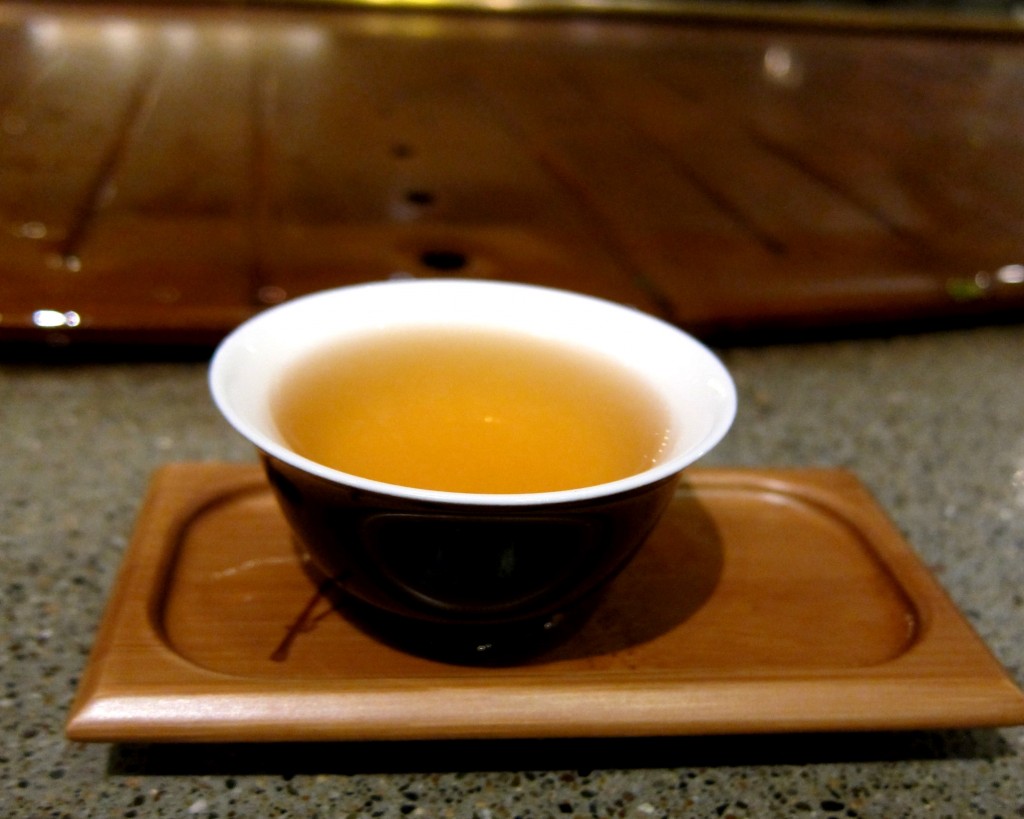
Today we did three kinds of Chinese oolong, all of which are rinsed and steeped in 205F water. A little bit of background on oolong: they are 20-80% oxidized (as compared to green tea which is not oxidized at all, and black tea which is 100% oxidized). Because this is such a wide range of oxidization, the oolong category also includes the biggest number of varieties. At least with the following 3 kinds, I could tell the relative degree of oxidization based on the smell. The oxidization is induced by bruising the tea leaves after they’re picked, and it is stopped by pan-frying (or high heat in general).
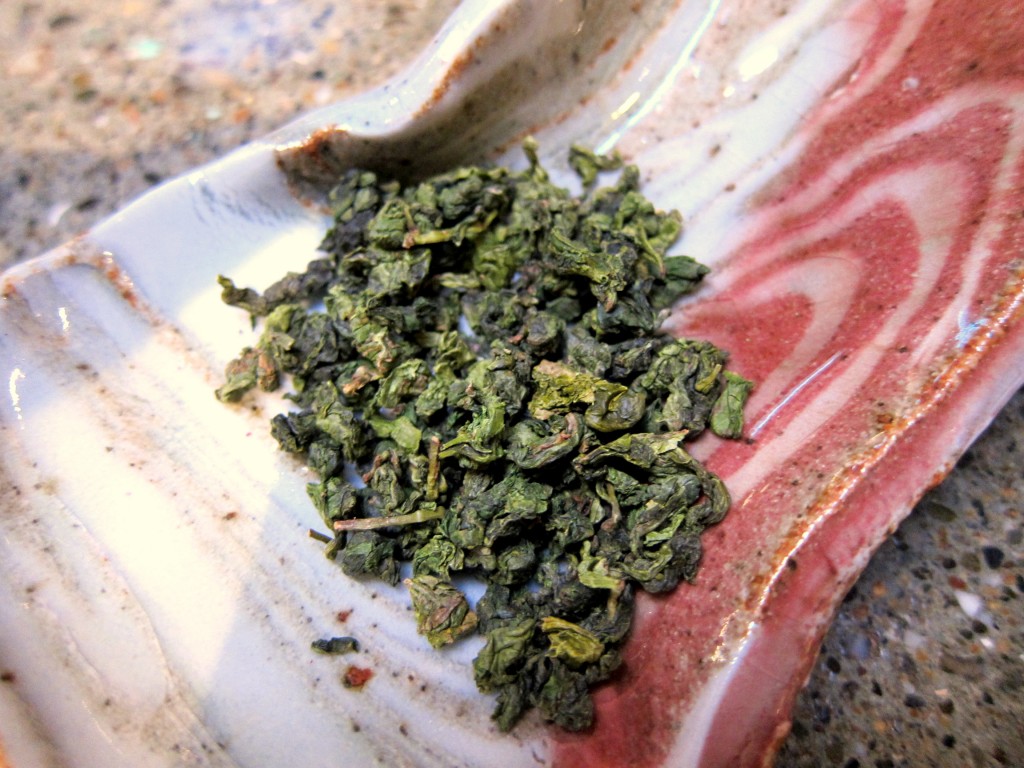
1. Yellow Gold oolong: smells sweet and “aged” like a wet dry leaf. The first steep takes 30 s, giving a light topaz green color and a floral incense smell. The taste is dark, sweet, and distinctively floral, it reminds me of dry sepals (the green protective layer of flower buds). Sam describes it as “melony”, but it was definitely a hard taste to put into words. Subsequent steeps take 20 s, and Yellow Gold can be steeped for about 6 times.
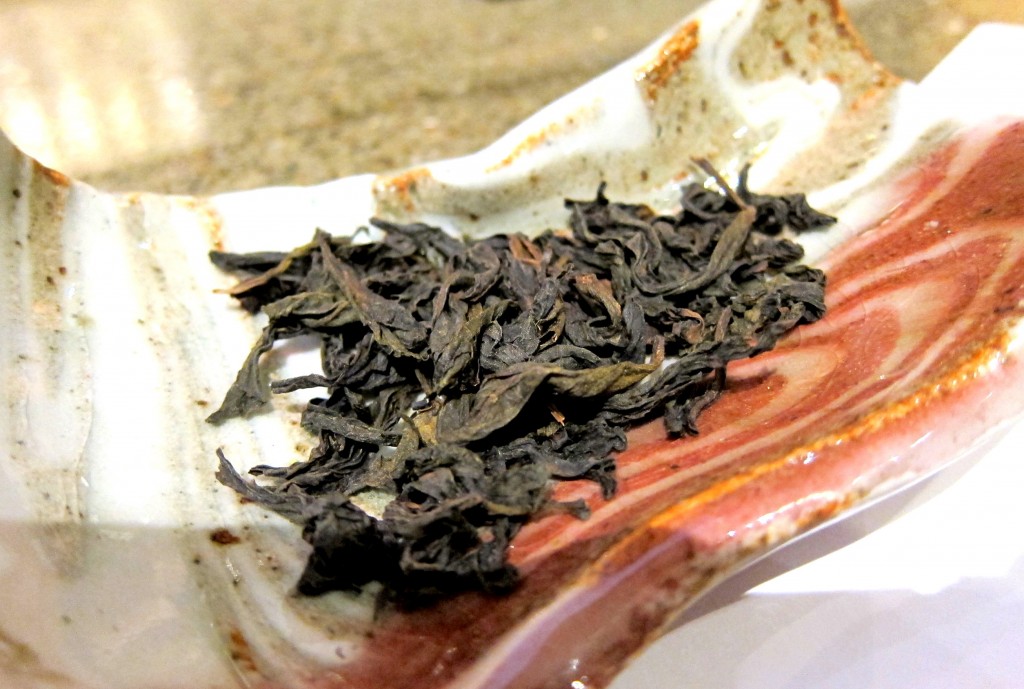
2. Big Red Robe (Da Hong Bao): the tea leaves smell like dried/burnt tree bark, also a bit of the sweet but salty smell of dried squid. After putting a scoop into a warmed gaiwan and giving it a few shakes, the “charred” smell becomes much more prominent. After a quick rinse and 40 s steep, the color is dark orange (indicating that it’s more oxidized than the Yellow Gold). Its taste is the most interesting:
— At first, it’s part woody and sandy like tree bark, part aged sweet like Chinese herb medicine.
— The second steep: it doesn’t leave any taste on the tongue but it’s deep and lingering at the throat. The taste retreats, so to speak. One girl refers to it as the “red undertone”.
— When it’s cool, the taste becomes so aromatic that it’s soapy.
— At probably the 8th steep, it tastes like boiled bokchoy with a subtle nuttiness. Charlotte describes it as “boiled spinach” though.
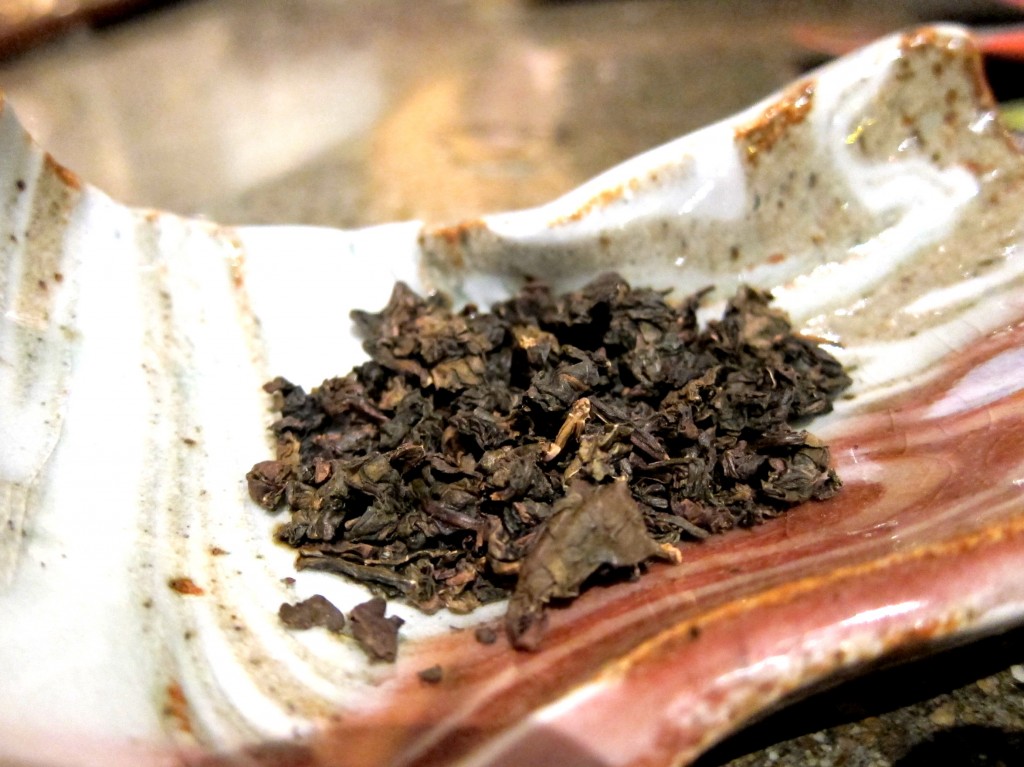
3. Monkey-picked Tieguanyin: First of all, humans picked these, not monkeys. The reason behind the name is that the Camellia sinnesis is grown on such steep mountainsides that it looks impossible for human to get there and pick teas. I read somewhere that monkey-picked Tieguanyin has an orchid aroma, but my nose strongly disagrees. This tea is not at all floral, it smells rather like the sandy mud on a seabed or pan-fried dried shrimps, and Charlotte describes it as “rusty”. Sam says it has about the same oxidization level as Da Hong Bao, but it smells a little more oxidized to me.
It takes 45-60 s to steep, the smell before and after steeping is the same. The taste is strong, woody, musky, and somewhat fish-y (but much less so than the sencha. As a comparison, sencha is like steamed fish, monkey-picked oolong is like smoke-dried fish).
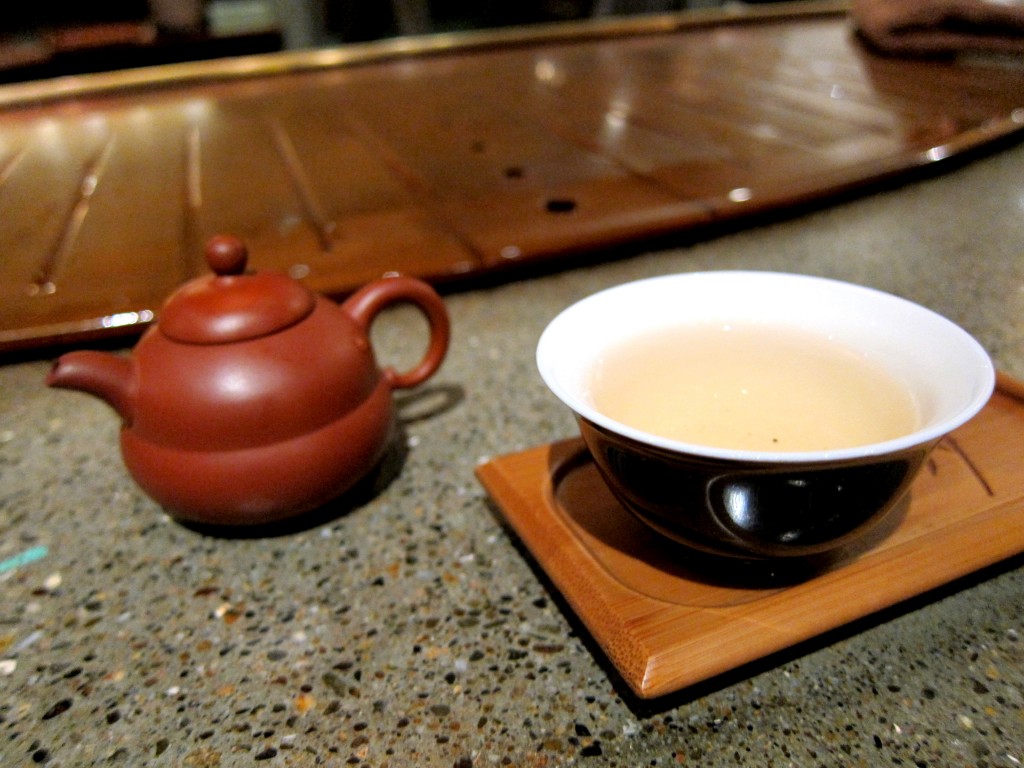
Sam also let us try steeping this third oolong using a Yixing clay teapot (also known as “Purple Sand teapot”). The teapot seemingly solidifies the smell and taste of the tea: they become stronger and “saltier”, like that of a root. Charlotte referred to it as “bamboo-y”. Interestingly, tea steeped in the Yixing clay teapot preserves their taste even after about 20 steeps.
As a rule I’ve deducted from tonight, let the oolong cool down for about 3-5 minutes before drinking to really reveal its taste, but smell it as it’s poured. The steeping temperature is so high that if you don’t let it cool, you’re just numbing your tongue with hot water. The smell and taste of oolong are definitely profound.